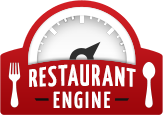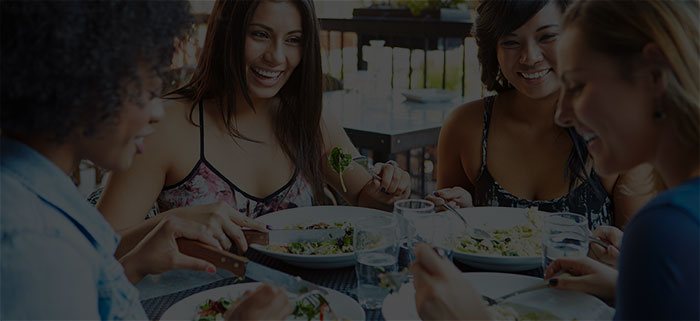7 Ways To Make Your Menu Better (Without Adding New Items)

Here are some ways to make your restaurant menu better.
Let’s talk about engineering. In the restaurant business, the term refers to menu engineering – the process by which you create the perfect menu to entice your customers and keep them coming back to order the same dish or try new ones.
Menu engineering maximizes your restaurant’s profitability by subconsciously leading customers to buy what you want them to buy. (tweet this)
Your menu is the heart and soul of your restaurant – your reason for opening the doors each day. The menu combines your concept, your décor, your location and your food offerings into one piece. This piece, your menu, is also one of your most effective sales vehicles. Used correctly by smart restaurateurs, the restaurant menu guides diners to choose the items you want them to order.
Your menu may have many categories. These can be further broken down by you into four distinct areas:
- The STARS: Your diners are willing to pay top dollar for these excellent dishes that have a high profit margin. They should be your flagship signature items.
- The PUZZLES: Puzzle dishes are difficult to sell but have a high profit margin.
- The PLOWHORSES: Your popular staples, but less profitable items. Think steak.
- The DOGS: The least popular items that also have a low profit margin.
With clever, strategic menu engineering, you can steer your diners to the stars and the puzzles. In this blog post, we’ll discuss seven ways you can make your menu better while guiding your diners to your highly profitable menu items.
Write the Language of Food
According to Charles Spence, if you give a dish an ethnic label, such as an Italian name, people will find the food more authentic and evocative. Calling your pasta dish, “Grandma Bella’s Barcelona Noodles,” has more impact than spaghetti and meatballs.
Descriptive items keep your customers coming back. Even if it really is just spaghetti and meatballs, diners will think they can only get them at your restaurant, and they’ll return again and again.
Research from Cornell University found that using descriptive menu–item labels increases food sales and improves the attitude your customers have towards both the food and the restaurant. Another study shows that using descriptive menu labels can raise sales by as much as 25%, compared to food items without intriguing text.
Using “embroidered” text brings the ultimate sensory experience to your menu making your diner more likely to be satisfied at the end of the meal. The more adjectives, the better off you’ll be.
Consider this engineered text for chocolate cake: made by hand, this tender cake is laced with freshly-opened vanilla beans and topped with our secret homemade, whipped by hand cocoa espresso frosting. It sounds much better than chocolate cake with coffee frosting.
Plan the Layout
The organization of your menu is a key guiding factor. It makes your menu more accessible and encourages customers to order. Most restaurants group their items under headings such as beef, chicken, pasta, seafood, appetizers, deserts, etc. Years of testing has shown that diners are more likely to order the first item in one of these headings.
For example, if Chicken Diablo is your first item under chicken, this is the one most likely to be ordered. Place your most profitable dishes in the lead position – think “first in show.” Take the PUZZLE dish – this is an excellent place to put this less-ordered, but more profitable item.
Conventional wisdom also suggests limiting the amount of items in each category to 6-10 considering your restaurant type.
Use Visual Aids

Visuals (not just images of food) can enhance a menu.
Draw a line around your menu item and its description, and diners will order it. If you want to promote something, set it apart from the rest of the menu. Another way to do this is with photos. While you can use them throughout your menu, using them sparingly guides diners to the items you want them to purchase.
If you’re a higher-end restaurant, and you’re afraid this might look tacky, consider a colored or special font. Even an underline or italics can work.
Package the Meal
Don’t overlook the package deal, or the psychological upsell. Convince your diners to order more than an entrée by packaging their salad or appetizer with their main course and adding a drink or dessert. The few extra dollars they’ll spend adds up to extra revenue in your pocket.
Another packaging option includes features such as sampler plates or fixed menus. This removes the sometimes overwhelming responsibility of choosing what to eat. If you limit the diner’s selection by offering them a package, they’ll often order this more expensive item to avoid having to make a choice.
Ditch the Dollars
Don’t use dollar signs because dollar signs remind your diners they are spending money. Use simple numbers, or spell out the amount, and psychologically your diners will “think” they are spending less. When given a menu without dollar signs, most diners will spend more money.
Try not to end your prices with the number 9. In our current economy, prices that end in 9, such as 10.99, tend to signify value, but not always quality. For more effective pricing, end your prices with the friendlier number five, or just include the price without any cents at all. Using no cents creates a cleaner, simpler menu.
Keep the menu prices as abstract as possible to make spending less threatening, thus increasing your bottom line.
Offer Foods in Two Portion Sizes
In a strategy called bracketing, many menus offer the same dish in two different sizes. Your customer assumes the smaller portion is the best value because it costs less, and they believe you want to sell them the higher priced menu item. What you really want is to sell the smaller portion at the lower price.
This technique involves well-thought out menu engineering because as you may know, the customer’s assumption is incorrect. It costs you less money on raw materials to make the smaller portion, and the increase of cost to price is a larger gap than that of the larger size. You are actually making a larger profit on the smaller portion, while your customer thinks they are being conscientious. This is a win-win situation for everyone.
Bracketing is an often underutilized tool in the restaurant industry, but it is one that demands your attention. (tweet this)
Pay Attention to the Scanning Path
When you analyze reading patterns, you’ll understand how your customer views your menu. Scan paths are a series of eye fixations you can study to see how people read your menu.
According to a Korean research study, a third of your diners are more likely to order the first item they see on your menu. Most people will look at the upper-right hand corner first, so you should put your most profitable items (the STARS) in that position.
Feel free to put your most expensive dish in that prime spot because once your customer sees that, the rest of your menu will seem reasonably priced. The conventional industry wisdom states that your diner will look in the upper-right hand corner first, followed by the upper-left hand corner. After this, there is some dissention as to whether your reader goes to the bottom-right or bottom-left corner, so take some care with the items/categories in both of these sections.
Remember that scan paths are different on a computer or mobile device, so when engineering your online menu, you’ll need to adjust your menu organization and arrangement.
In your customers’ busy lives, eating out is so common that most diners can be easily swayed by your menu suggestions. These subliminal menu suggestions increase your restaurant’s profits. Make menu engineering a priority at your restaurant by putting careful thought into the way you design and write your menu for your increased success.
Looking for a way to engineer your online menu? Contact us today – we’d love to help you engineer your menu!
Images: Marina & Kurtis Carbutt


Interesting, thank you 😉